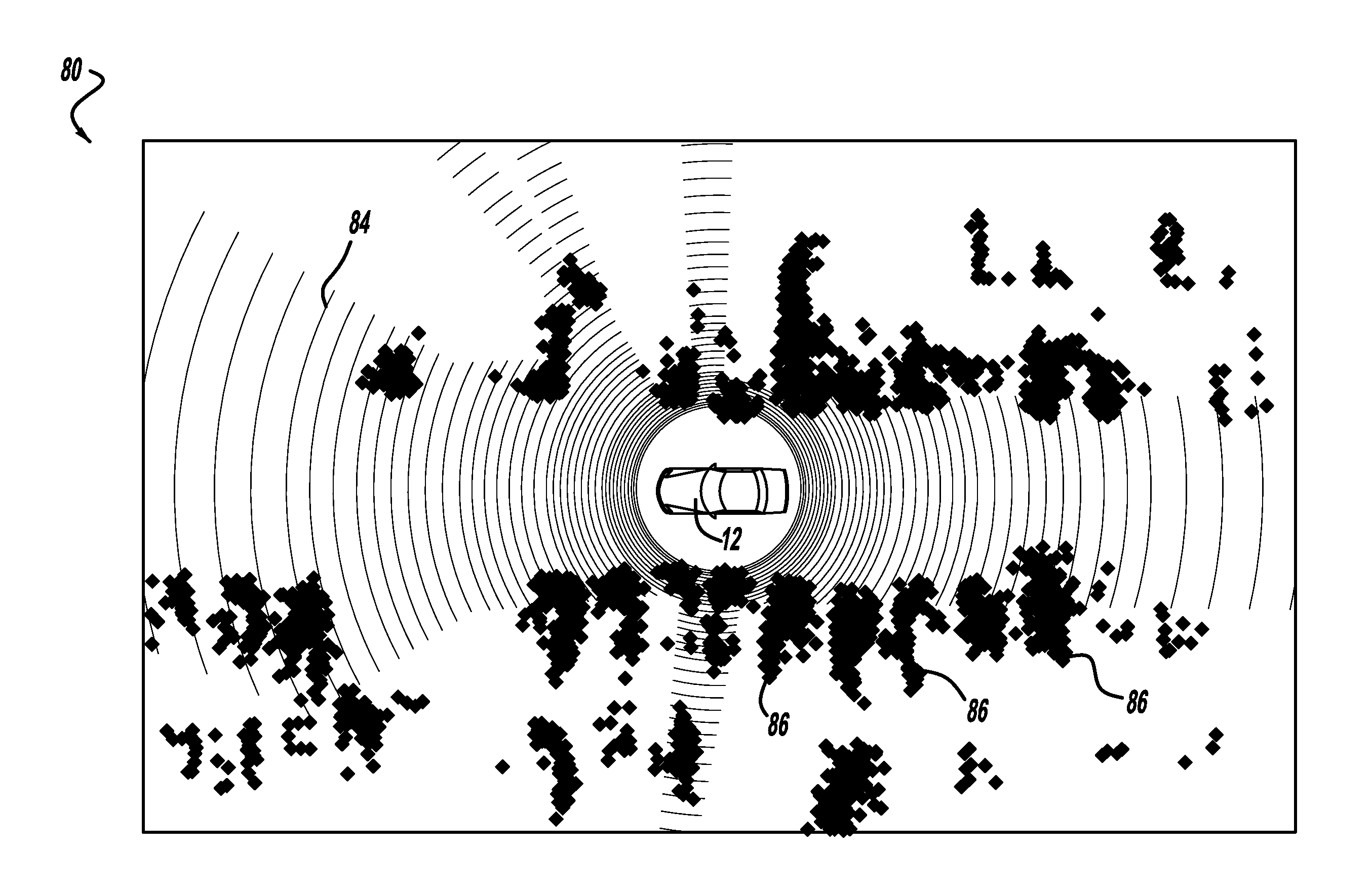Object and vehicle detection and tracking using 3-D laser rangefinder
a laser rangefinder and object technology, applied in the field of object detection methods and systems, can solve the problems of unable to distinguish between objects in cluttered environments, unable to determine the height of objects, and unable to detect objects reliably
- Summary
- Abstract
- Description
- Claims
- Application Information
AI Technical Summary
Benefits of technology
Problems solved by technology
Method used
Image
Examples
Embodiment Construction
[0018]The following discussion of the embodiments of the invention directed to a method and system for object detection and tracking using a three dimensional laser rangefinder is merely exemplary in nature, and is in no way intended to limit the invention or its applications or uses.
[0019]Vehicle collision avoidance and semi-autonomous driving systems require very accurate information about objects in their surrounding environment in order to be effective. Traditional object detection systems using radar or camera-based vision technology can have problems discerning objects in the cluttered environment that is typical of real-world driving situations. For example, radar-based systems may not reliably detect non-metallic objects, such as concrete curbs, rocks, and vegetation. And camera-based vision systems can have difficulty discerning between objects of similar color or brightness, and cannot directly measure range or distance to an object. In the present invention, a three dimen...
PUM
 Login to View More
Login to View More Abstract
Description
Claims
Application Information
 Login to View More
Login to View More - R&D
- Intellectual Property
- Life Sciences
- Materials
- Tech Scout
- Unparalleled Data Quality
- Higher Quality Content
- 60% Fewer Hallucinations
Browse by: Latest US Patents, China's latest patents, Technical Efficacy Thesaurus, Application Domain, Technology Topic, Popular Technical Reports.
© 2025 PatSnap. All rights reserved.Legal|Privacy policy|Modern Slavery Act Transparency Statement|Sitemap|About US| Contact US: help@patsnap.com



